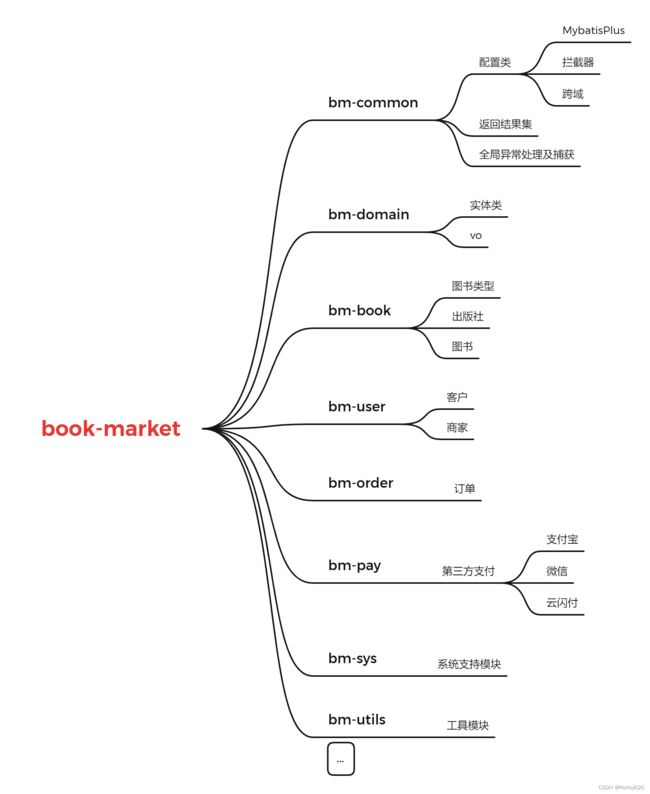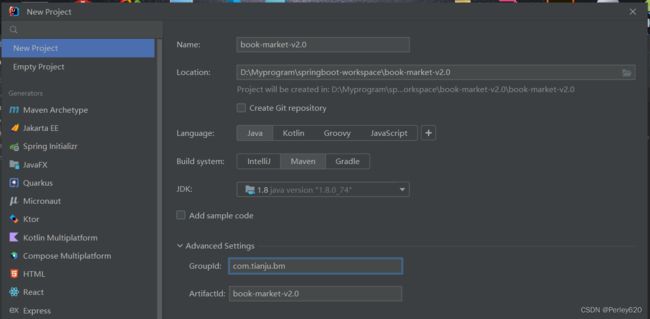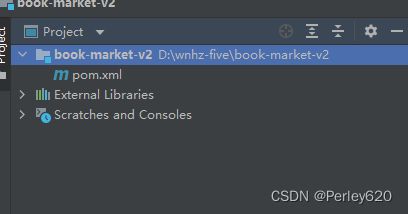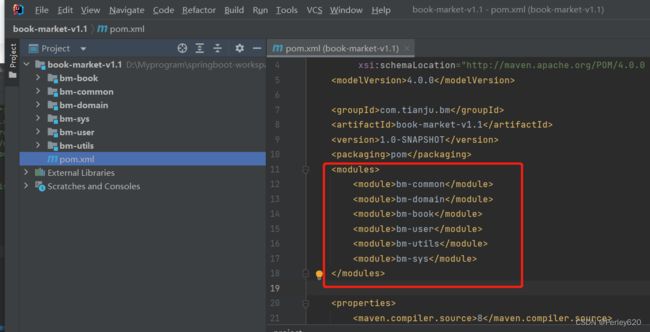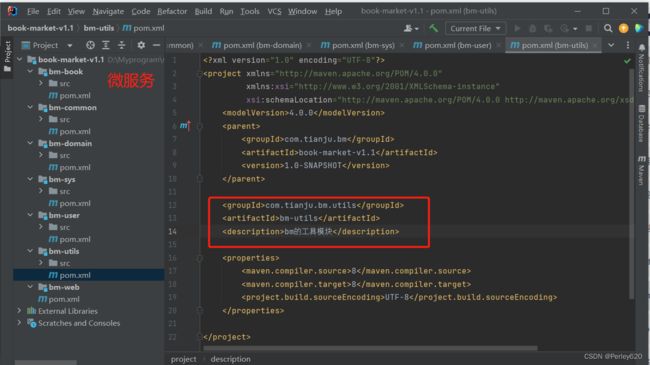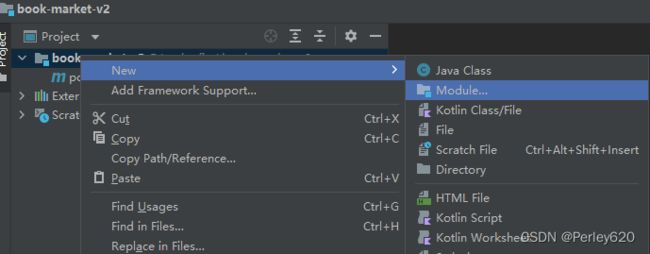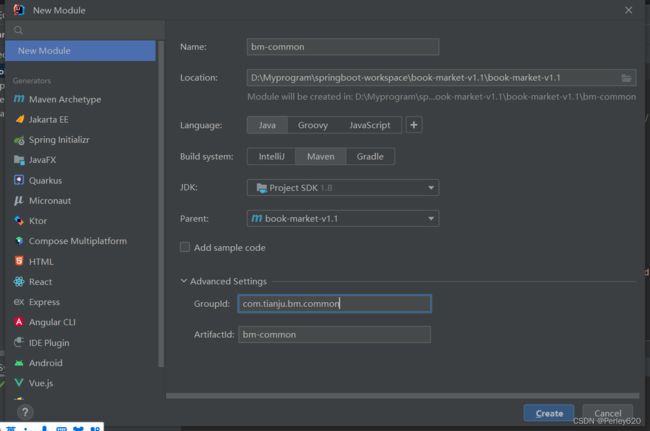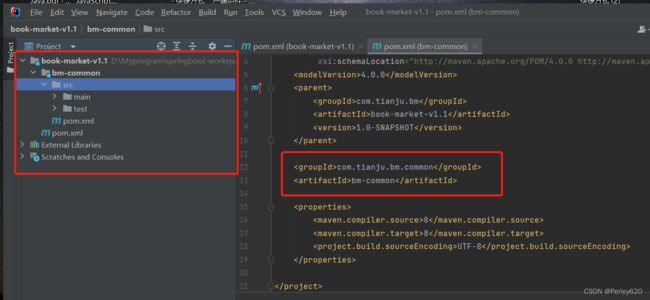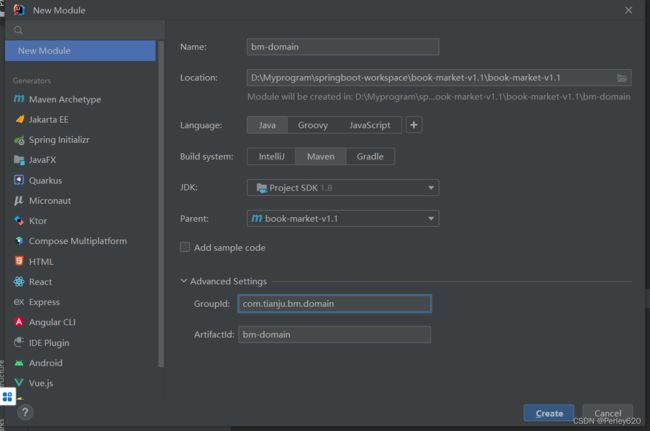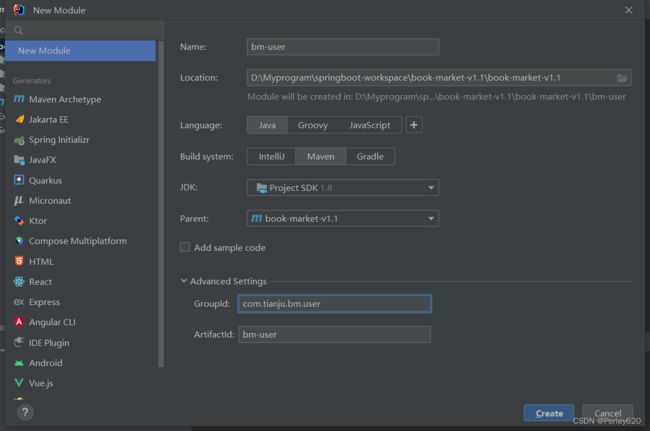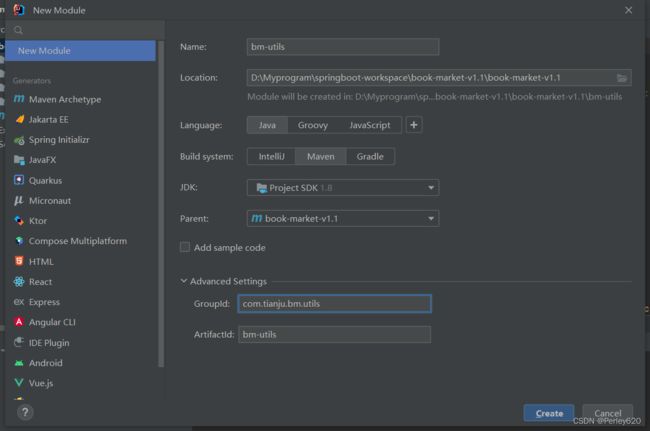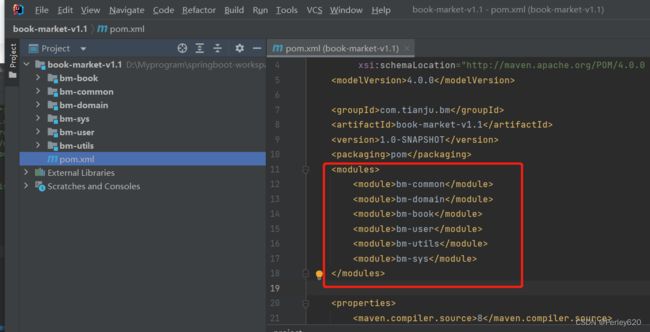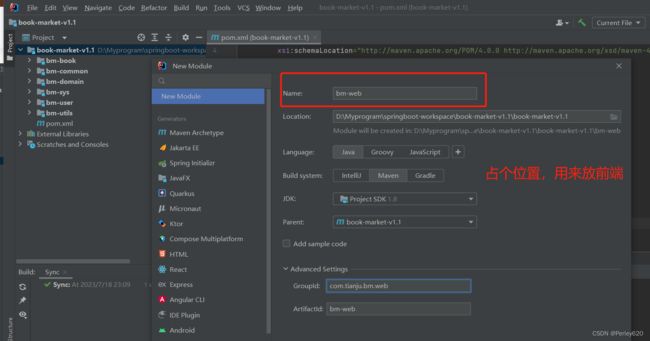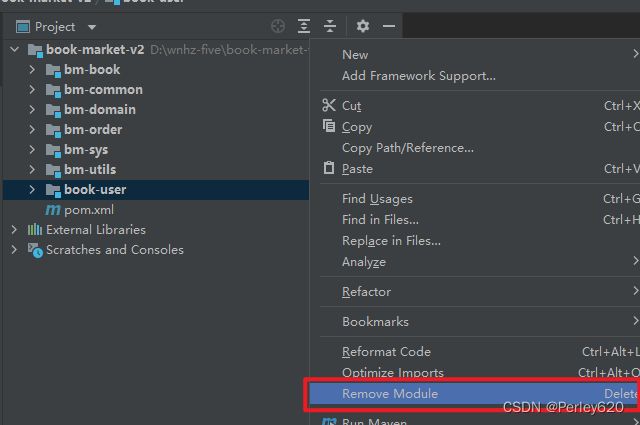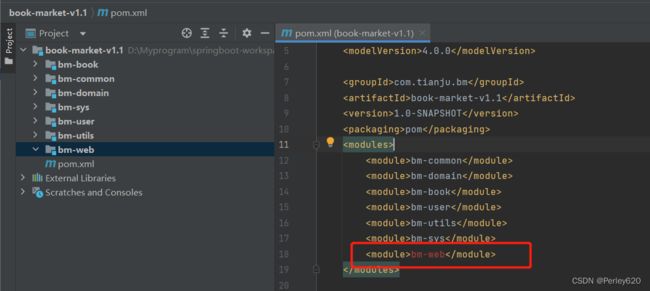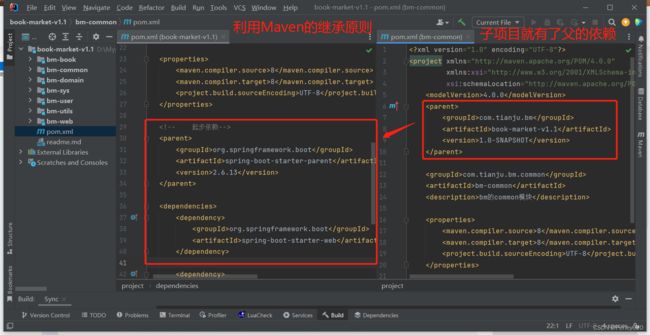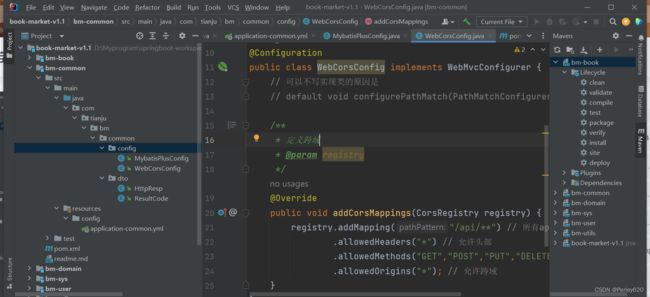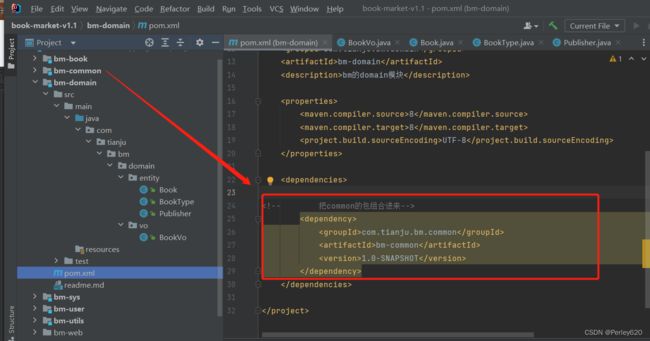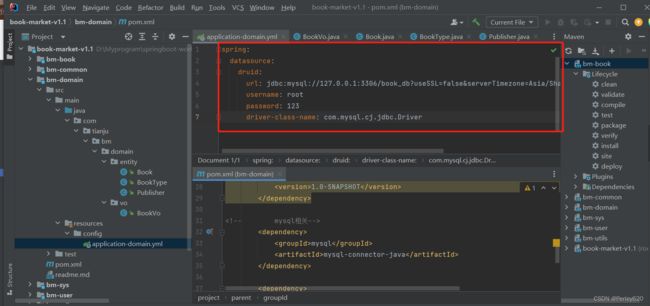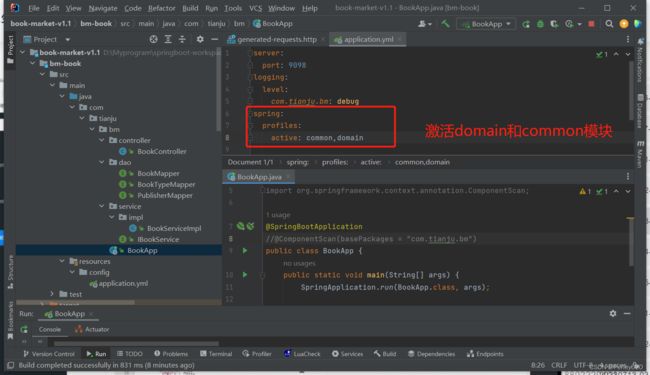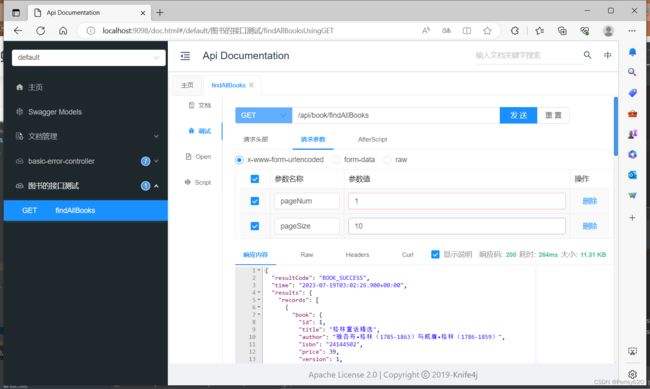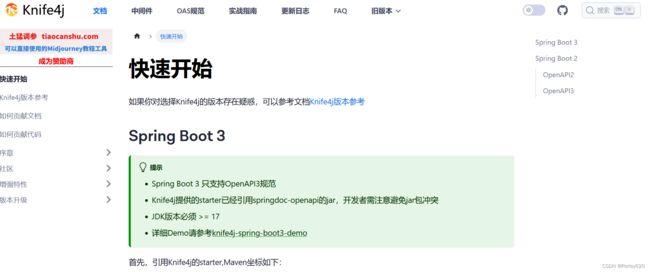SpringBoot学习——项目的多模块构建common、domain... & Knife4j接口测试使用初步
目录
- 引出
- 项目的多模块构建
-
- 总项目
- 模块构建
-
- 放后端的相关
- 放前端的代码,占位
- 问题:如果删除
- 依赖引入
-
- lombok通用
- 模块
-
- common模块,都要用
- domain模块,实体类相关
- book模块,主模块
- 运行测试
- 接口测试工具
-
- Knife4j
- 1.引入依赖
- 2.配置
- 3.常用注解
- 总结
引出
1.springboot项目的多模块构建
2.Knife4j接口测试使用初步
git代码仓库:
https://gitee.com/pet365/springBoot-multi-module
项目的多模块构建
总项目
总项目是一个空的盒子,放置其他的模块
其他模块需要时,可以导入
模块构建
构建模块:添加model
设置groupId
放后端的相关
放前端的代码,占位
问题:如果删除
先删除模块,再删除文件,然后删一下pom的引用
依赖引入
lombok通用
maven的基础原则:
A模块: B模块, C模块
book-market下面的子模块继承 book-market
父模块定义的 子模块自动继承
<parent>
<groupId>com.tianju.bmgroupId>
<artifactId>book-market-v1.1artifactId>
<version>1.0-SNAPSHOTversion>
parent>
模块
common模块,都要用
<dependencies>
<dependency>
<groupId>com.github.xiaoymingroupId>
<artifactId>knife4j-openapi2-spring-boot-starterartifactId>
<version>4.0.0version>
dependency>
dependencies>
比如允许跨域放到common模块中
配置application
# 项目中可以使用Swagger做接口测试
knife4j:
enable: true
mybatis-plus:
configuration:
log-impl: org.apache.ibatis.logging.stdout.StdOutImpl
domain模块,实体类相关
<dependencies>
<dependency>
<groupId>com.tianju.bm.commongroupId>
<artifactId>bm-commonartifactId>
<version>1.0-SNAPSHOTversion>
dependency>
<dependency>
<groupId>mysqlgroupId>
<artifactId>mysql-connector-javaartifactId>
dependency>
<dependency>
<groupId>com.alibabagroupId>
<artifactId>druid-spring-boot-starterartifactId>
<version>1.2.18version>
dependency>
dependencies>
引入上面设置好的common模块
实体类相关,设置一下数据库的连接
配置application
spring:
datasource:
druid:
url: jdbc:mysql://127.0.0.1:3306/book_db?useSSL=false&serverTimezone=Asia/Shanghai&allowPublicKeyRetrieval=true
username: root
password: 123
driver-class-name: com.mysql.cj.jdbc.Driver
book模块,主模块
引入common和domain模块
<dependencies>
<dependency>
<groupId>com.tianju.bm.domaingroupId>
<artifactId>bm-domainartifactId>
<version>1.0-SNAPSHOTversion>
dependency>
dependencies>
激活一下domain模块和common模块
server:
port: 9098
logging:
level:
com.tianju.bm: debug
spring:
profiles:
#引用application-common,applicaiton-domain配置
active: common,domain
运行测试
http://localhost:9098/doc.html
接口测试工具
https://apifox.com/
swagger2,较多
swagger3,
Knife4j
Knife4j的前身是swagger-bootstrap=ui,前身swagger–bootstrap-ui是一个纯swagger–ui的ui皮肤项目
https://doc.xiaominfo.com/docs/quick-start
1.引入依赖
<dependency>
<groupId>com.github.xiaoymingroupId>
<artifactId>knife4j-openapi2-spring-boot-starterartifactId>
<version>4.1.0version>
dependency>
底层就是swagger
2.配置
knife4j:
enable: true
3.常用注解
import io.swagger.annotations.Api;
| 序号 | 注解 | 作用 |
|---|---|---|
| 1 | @Api(tags = “图书的api接口类”) | 左侧名字 |
| 2 | @ApiOperation(“findPage方法测试”) | get方法名字 |
| 3 | @ApiImplicitParam(name = “findByPage”,value = “分页查询”,required = true) | 参数相关 |
| 4 | @ApiModel(“DTO返回数据”) | 写在HttpResp实体类上 |
| 5 | @ApiModelProperty(“time”) | 写在HttpResp类属性上 |
BookController.java文件
package com.tinaju.bm.controller;
import com.tinaju.bm.dto.HttpResp;
import com.tinaju.bm.dto.ResultCode;
import com.tinaju.bm.entity.Book;
import com.tinaju.bm.service.IBookService;
import io.swagger.annotations.Api;
import io.swagger.annotations.ApiImplicitParam;
import io.swagger.annotations.ApiOperation;
import org.springframework.beans.factory.annotation.Autowired;
import org.springframework.web.bind.annotation.GetMapping;
import org.springframework.web.bind.annotation.RequestMapping;
import org.springframework.web.bind.annotation.RestController;
import java.util.Date;
import java.util.List;
@Api(tags = "图书的api接口类")
@RestController
@RequestMapping("/api/book")
public class BookController {
@Autowired
private IBookService bookService;
@ApiOperation("findPage方法测试")
@ApiImplicitParam(name = "findByPage",value = "分页查询",required = true)
@GetMapping("/findByPage")
public HttpResp findByPage(int currentPage){
List<Book> bookList = bookService.findByPage(currentPage, 5);
return HttpResp.results(ResultCode.BOOK_SUCCESS,new Date(),bookList);
}
}
HttpResp.java返回给前端的实体类
package com.tinaju.bm.dto;
import io.swagger.annotations.ApiModel;
import io.swagger.annotations.ApiModelProperty;
import lombok.*;
import java.io.Serializable;
import java.util.Date;
/**
* 返回给前端的响应
* @param
*/
@ApiModel("DTO返回数据")
@Getter@Setter
@ToString
public class HttpResp<T> implements Serializable {
private ResultCode resultCode;
@ApiModelProperty("time")
private Date time;
@ApiModelProperty("results")
private T results;
private HttpResp(){}
public static <T> HttpResp<T> results(ResultCode resultCode,Date time,T results){ // java泛型的写法
HttpResp httpResp = new HttpResp();
httpResp.setResultCode(resultCode);
httpResp.setTime(time);
httpResp.setResults(results);
return httpResp;
}
}
总结
1.springboot项目的多模块构建
2.Knife4j接口测试使用初步
